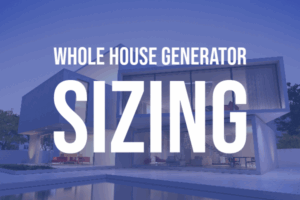Power outages are an inconvenience we’ve all experienced at some point in our lives. They disrupt daily routines, work, and communication, underscoring the importance of a reliable power supply. To navigate these interruptions effectively, it’s essential to understand the primary culprits behind power outages. In this blog, we’ll unveil the most common and surprising causes of power outages, backed by enlightening statistics.
Weather-Related Outages
Unpredictable and severe weather events significantly threaten power distribution systems. Storms, hurricanes, tornadoes, and snow or ice storms can cause extensive damage to power lines, poles, and substations, resulting in widespread outages.

The U.S. Energy Information Administration (EIA) reported that 58% of major power outages in the United States between 2002 and 2019 were due to severe weather events.
Equipment Failure and Aging Infrastructure
Aging power infrastructure is a growing concern, leading to an increased risk of equipment failure. Overloaded or outdated electrical equipment, transformers, and aging power lines can fail, causing power disruptions.

According to a study by the American Society of Civil Engineers (ASCE), the United States received a D+ grade for its energy infrastructure in 2021, indicating significant room for improvement.
Human Error and Accidents
Human error can also contribute to power outages. Accidental damage to power lines during construction or maintenance, improper handling of equipment, or accidents involving vehicles colliding with utility poles can result in power interruptions.
The EIA reported that 10% of major power outages in the U.S. from 2002 to 2019 were caused by accidents, equipment failures, or human error.
Grid Overload and Power Surges
During peak demand periods or sudden increases in electricity usage, the power grid can become overloaded, leading to power surges or localized outages.
The Department of Energy (DOE) states that power demand has been increasing steadily, which can strain the grid, especially during extreme weather events or heat waves.
Cyber Attacks and Hacking
In our digital age, cyber threats are a significant concern. Malicious cyber activities, including hacking and cyber-attacks on power systems, can disrupt the grid and lead to power outages.
The U.S. Department of Homeland Security reported a significant increase in cyber incidents targeting critical infrastructure, including the power sector.
Wildlife and Vegetation Interference
Wildlife and vegetation can interfere with power lines, leading to power outages. Birds, rodents, trees, and other vegetation can come into contact with power lines and cause disruptions.

According to the North American Electric Reliability Corporation (NERC), wildlife contact with power lines accounted for about 7% of power outages in the United States in 2019.
Conclusion
Understanding the common causes of power outages equips us to be better prepared and resilient in the face of disruptions. Whether it’s a storm, aging infrastructure, or human error, having a backup power solution like a home generator or solar power system can provide peace of mind during outages.
Check out our Residential Standby Generators or contact us for more information on how to backup your home.








